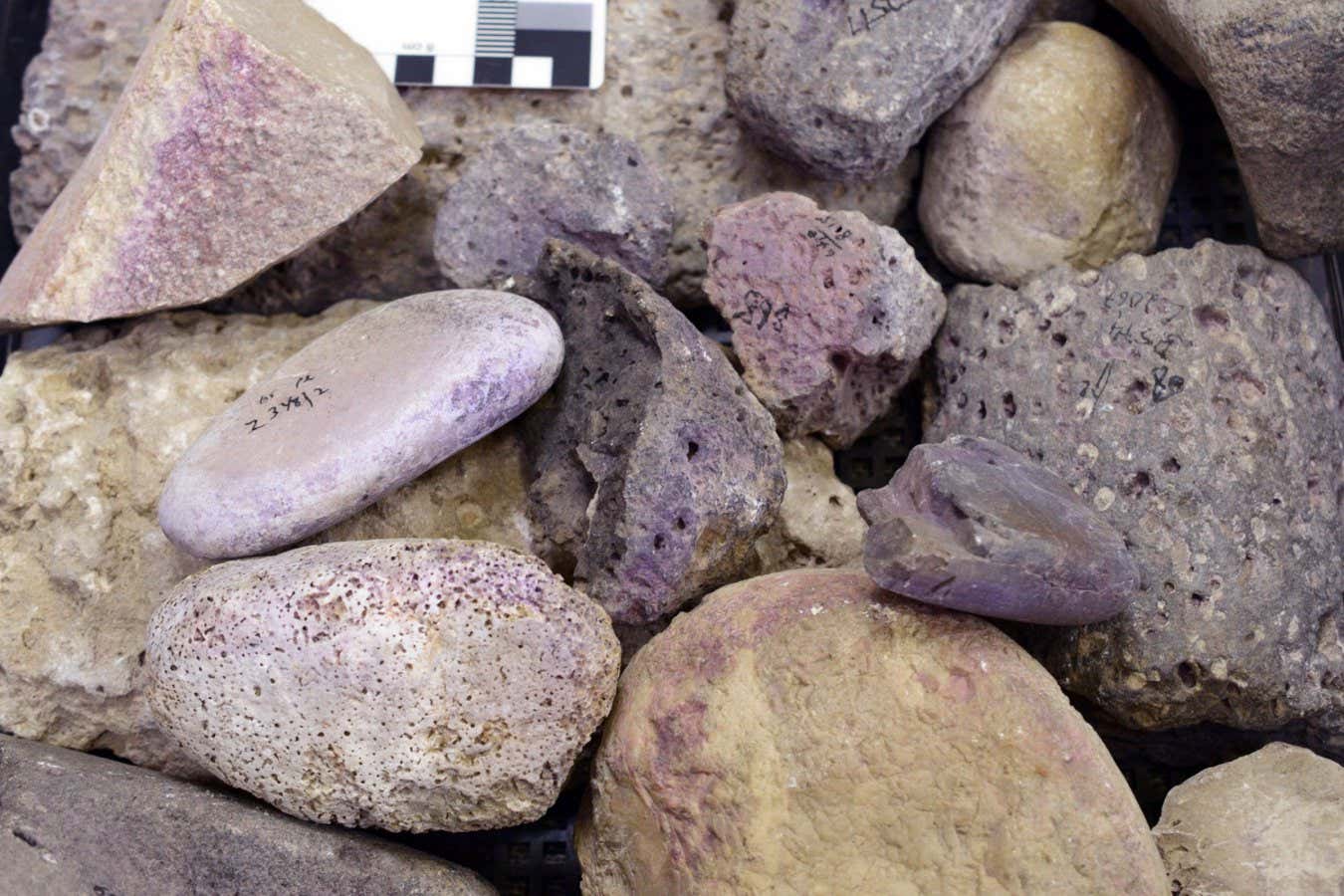Beginning around 3000 years ago, Tel Shiqmona in modern-day Israel was a major centre for the production of Tyrian purple, a valuable commodity produced from marine snails
By James Woodford
16 April 2025
Stone tools with purple dye residue found at Tel Shiqmona in Israel
Maria Bukin/Shalvi et al., 2025, PLoS One, CC-BY 4.0
For centuries, a coastal settlement in modern-day Israel was home to the industrial-scale production from marine snails of a purple dye that was one of the ancient world’s most precious commodities.
Known as Tyrian purple, it was especially sought after to colour woollen textiles and was highly prized by the wealthy and powerful in Iron Age Mediterranean societies. But until now the direct evidence of any sites of large-scale production has been sparse.
Read more
How our ancestors invented clothing and transformed it into fashion
Advertisement
From 1100 BC to about 900 BC, Tel Shiqmona was a small Phoenician fishing village where purple dye was produced on a small scale. Then, as the Kingdom of Israel began to expand, the site was transformed “from a fishing village to a fortified purple dye production centre”, says Golan Shalvi at the University of Chicago.
During archaeological work at the site, Shalvi and his colleagues found the remains of dye-stained vats used to process the substance, each of which could have held up to 350 litres of liquid. Altogether 176 artefacts related to purple dye production were recovered, including 135 purple-stained items.
The dye is harvested from sea snails in the Muricidae family, which secrete mucus to defend themselves and kill prey. “The secretion is initially a slightly greenish fluid, which oxidises upon exposure to air and gradually turns purple,” says Shalvi. “However, in order to transform it into an actual dye — one that chemically bonds with textiles — it must be processed into a solution through a complex series of chemical steps.”
